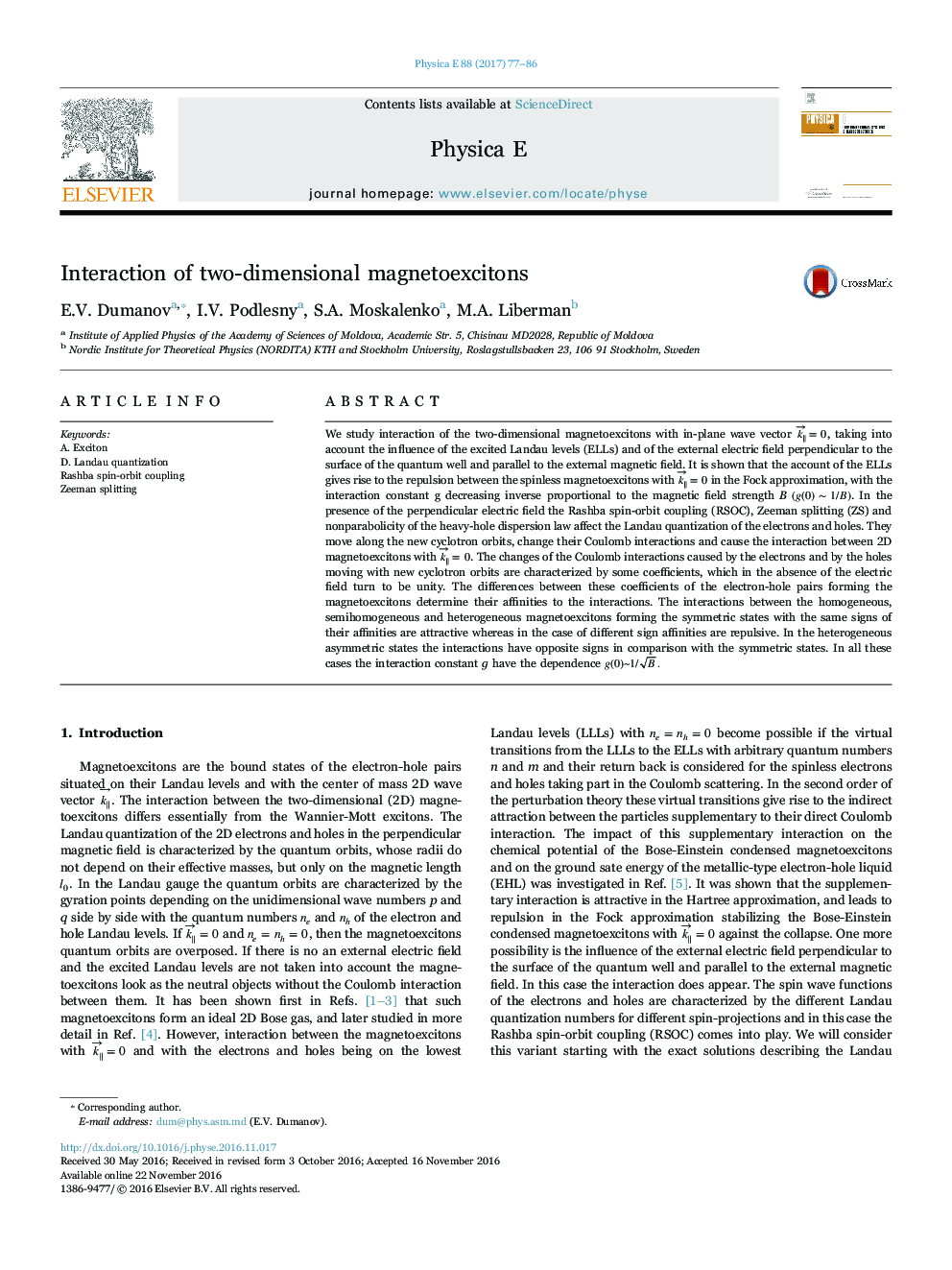| Article ID | Journal | Published Year | Pages | File Type |
|---|---|---|---|---|
| 5450202 | Physica E: Low-dimensional Systems and Nanostructures | 2017 | 10 Pages |
Abstract
We study interaction of the two-dimensional magnetoexcitons with in-plane wave vector kââ¥=0, taking into account the influence of the excited Landau levels (ELLs) and of the external electric field perpendicular to the surface of the quantum well and parallel to the external magnetic field. It is shown that the account of the ELLs gives rise to the repulsion between the spinless magnetoexcitons with kââ¥=0 in the Fock approximation, with the interaction constant g decreasing inverse proportional to the magnetic field strength B(g(0)â¼1/B). In the presence of the perpendicular electric field the Rashba spin-orbit coupling (RSOC), Zeeman splitting (ZS) and nonparabolicity of the heavy-hole dispersion law affect the Landau quantization of the electrons and holes. They move along the new cyclotron orbits, change their Coulomb interactions and cause the interaction between 2D magnetoexcitons with kââ¥=0. The changes of the Coulomb interactions caused by the electrons and by the holes moving with new cyclotron orbits are characterized by some coefficients, which in the absence of the electric field turn to be unity. The differences between these coefficients of the electron-hole pairs forming the magnetoexcitons determine their affinities to the interactions. The interactions between the homogeneous, semihomogeneous and heterogeneous magnetoexcitons forming the symmetric states with the same signs of their affinities are attractive whereas in the case of different sign affinities are repulsive. In the heterogeneous asymmetric states the interactions have opposite signs in comparison with the symmetric states. In all these cases the interaction constant g have the dependence g(0)~1/B.
Related Topics
Physical Sciences and Engineering
Materials Science
Electronic, Optical and Magnetic Materials
Authors
E.V. Dumanov, I.V. Podlesny, S.A. Moskalenko, M.A. Liberman,
